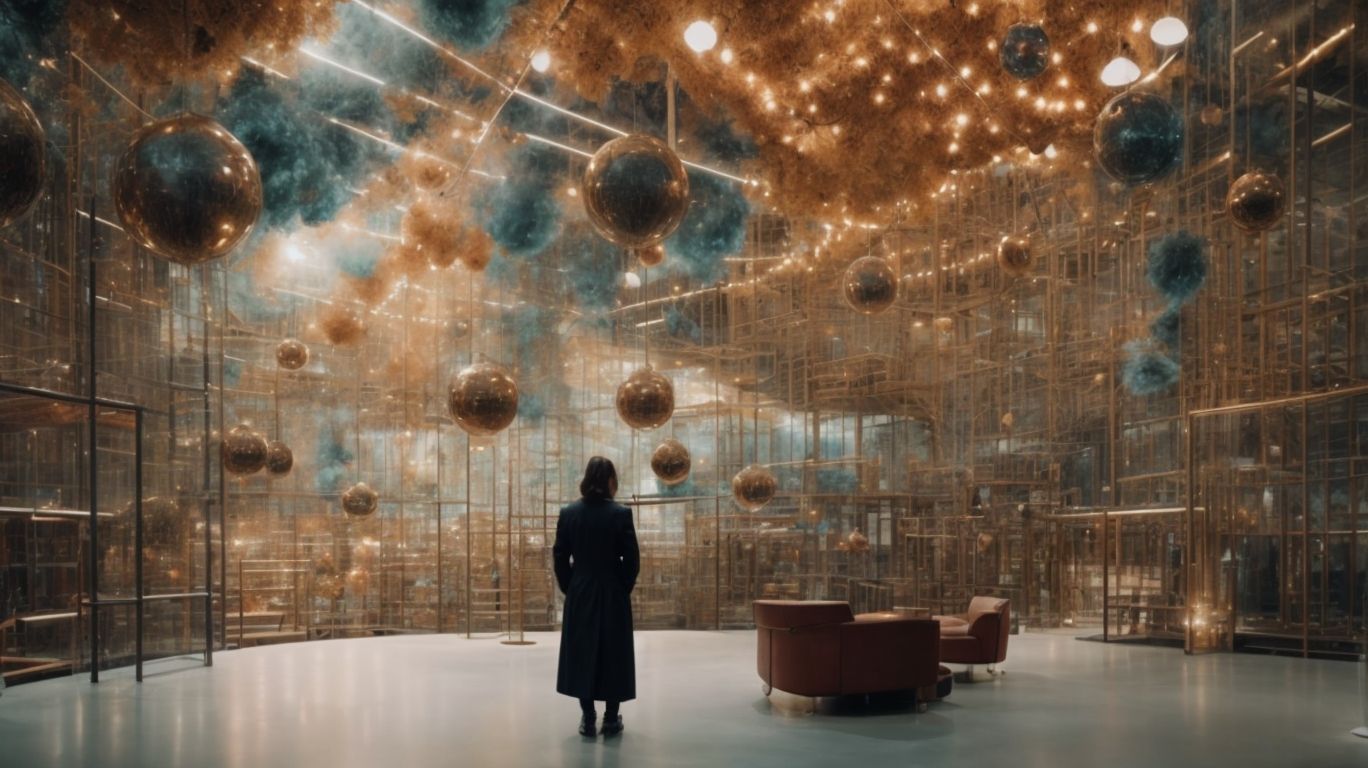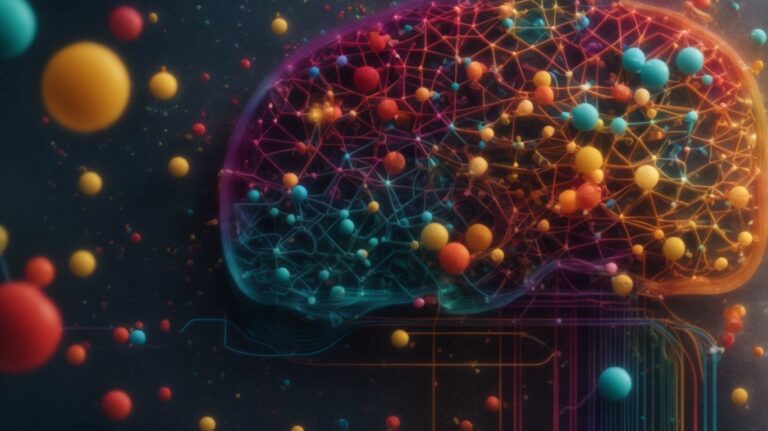Curious about the connection between psychology, art, and science? In this article, we will explore the definitions of these disciplines, the various branches and forms they encompass, and how they intersect and complement each other.
We will debunk common misconceptions about their relationship and discuss the potential benefits of integrating psychology, arts, and science for society.
Stay tuned to discover examples of successful collaborations and the exciting future developments in this intersection.
Contents
- 1 What Is Psychology?
- 2 What Is Art?
- 3 What Is Science?
- 4 What Is The Relationship Between Psychology, Arts, And Science?
- 5 How Can The Integration Of Psychology, Arts, And Science Benefit Society?
- 6 Frequently Asked Questions
- 6.1 What is the relationship between psychology, arts, and science?
- 6.2 What are some common myths about the relationship between psychology, arts, and science?
- 6.3 How can psychology, arts, and science be integrated?
- 6.4 What are the benefits of bridging the gap between psychology, arts, and science?
- 6.5 How can we use psychology, arts, and science to address societal issues?
- 6.6 What are some potential challenges in bridging the gap between psychology, arts, and science?
What Is Psychology?
Psychology is the scientific study of the mind and behavior, diving into intricate facets of human cognition, emotion, and social interactions, often shrouded in myths and cognitive biases that researchers like Scott O. Lilienfeld aim to debunk.
Core principles in psychology revolve around understanding mental processes and behaviors through empirical research and critical analysis. Methodologies encompass a wide array of techniques, from observational studies to neuroimaging tools, enabling psychologists to explore the complexities of the human mind. The overarching goal of psychology is to enhance our understanding of individuals and society, contributing to improved mental health and well-being.
Despite its scientific foundation, psychology faces myths like Freudian ideas dominating popular culture and cognitive biases affecting research outcomes. Renowned experts like Scott O. Lilienfeld strive to promote evidence-based practices and challenge misconceptions within the field, emphasizing the importance of rigorous scientific inquiry and empirical validation.
How Is Psychology Defined?
The definition of psychology encompasses the scientific exploration of human behavior, cognitive processes, and emotional responses through empirical research, aiming to debunk prevalent myths and cognitive biases that may distort our understanding of the mind.
Psychology as a discipline employs various research methodologies such as observational studies, experiments, surveys, and neuroimaging techniques to delve deeply into the complexities of the human mind. By utilizing a systematic and rigorous approach, psychologists gather evidence-based practices that shed light on the underlying mechanisms of behavior and cognition, thereby offering insights into how individuals perceive, think, feel, and interact with their environment.
The importance of debunking myths and cognitive biases in psychology cannot be overstated. These misconceptions can cloud judgment, leading to inaccurate conclusions. Through empirical research, psychologists can unravel these erroneous beliefs, leading to a more nuanced and accurate understanding of human behavior and mental processes.
What Are The Different Branches Of Psychology?
Psychology branches into diverse fields such as clinical, social, and cognitive psychology, each focusing on specific aspects of human behavior, cognition, and social interactions while navigating through prevalent myths and cognitive biases that influence our understanding of psychological phenomena.
Clinical psychology delves into the assessment, diagnosis, and treatment of mental illnesses, offering therapeutic interventions tailored to individual needs.
Social psychology examines how individuals are influenced by social groups, studying topics like conformity, prejudice, and interpersonal relationships.
On the other hand, cognitive psychology looks at mental processes such as perception, memory, and problem-solving, unraveling the intricacies of human thought and information processing.
While clinical psychology emphasizes the importance of empirical research in developing effective interventions, social psychology sheds light on the power of situational contexts in shaping behavior.
Cognitive psychology, in contrast, focuses on internal mental processes, exploring how individuals acquire, store, and retrieve information.
What Is Art?
Art is a multifaceted expression of creativity and emotion, encompassing diverse forms of visual, auditory, and performing arts that challenge traditional norms and perceptions, often subject to debunking cognitive errors through innovative brain imaging techniques.
This intricate blend of subjective interpretation and objective evaluation has intrigued researchers and art enthusiasts alike, leading to a deeper understanding of how the human brain processes and responds to artistic stimuli. Modern advancements in neuroimaging technologies, such as functional magnetic resonance imaging (fMRI), have enabled scientists to delve into the intricate neural pathways that activate during art appreciation, shedding light on the cognitive mechanisms underlying aesthetic experiences.
How Is Art Defined?
The definition of art transcends conventional boundaries, encompassing a diverse array of creative expressions that engage cognitive processes, emotions, and cultural perspectives, sometimes entangled in myths and cognitive biases that shape our artistic perceptions.
Art, as a concept, is not confined to traditional notions of paintings or sculptures; rather, it extends to performance art, digital media, installations, and even everyday objects that challenge our perceptions and evoke complex reactions. Art has the power to stimulate critical thinking, foster empathy, and provoke reflection on societal issues, blurring the lines between reality and imagination. By exploring artistic forms, individuals can enhance their cognitive abilities, emotional intelligence, and cultural awareness, enabling them to connect with diverse perspectives and immerse themselves in a world of creativity and innovation.
What Are The Different Forms Of Art?
Art manifests in myriad forms such as painting, sculpture, music, and dance, each embodying unique aesthetic and emotional qualities that engage viewers and challenge preconceptions, often scrutinized through the lens of psychological science to debunk prevalent myths and cognitive biases.
Visual art, like paintings and sculptures, appeals to the viewer’s visual senses, inviting them to interpret colors, shapes, and forms in a personal and subjective manner, thus stimulating diverse emotional responses.
On the other hand, music, with its intricate melodies and rhythms, has the power to evoke profound emotions and memories, transcending language barriers.
Dance, as a form of physical expression, merges movement with emotion, conveying narratives and sentiments through gestures and choreography.
Through the application of psychological science, these art forms are analyzed to unravel the complexities of human perception and emotional reactions, shedding light on the intricate relationship between art and the human psyche.
What Is Science?
Science is a systematic pursuit of knowledge and understanding through observation, experimentation, and empirical evidence, fostering a culture of skepticism and critical inquiry to unravel complex phenomena such as climate change and its impacts on the environment.
By relying on the scientific method, which involves formulating hypotheses, conducting experiments, analyzing data, and drawing conclusions, science aims to provide reliable explanations for natural phenomena.
The emphasis on empirical evidence ensures that scientific claims are not based on subjective beliefs but on verifiable facts, enhancing the credibility of research findings and theories.
In the context of contemporary challenges like climate change, scientific analysis becomes crucial in understanding the causes, extent, and potential solutions to mitigate its adverse effects on the planet.
How Is Science Defined?
Science is a quest for truth and understanding based on evidence, rationality, and the pursuit of knowledge through rigorous methodologies, aiming to debunk myths and combat science denial by promoting evidence-based practices and critical thinking.
“
Through its emphasis on evidence-based reasoning, science serves as the cornerstone of progress and innovation in society. It relies on systematic observations, experimentation, and analysis to unravel the mysteries of the universe. By adhering to empirical research, science confronts misconceptions and falsehoods, fostering a culture of intellectual honesty and transparency.
Science constantly evolves, revising theories in light of new data, exemplifying its self-correcting nature. In a world inundated with misinformation, science becomes a beacon of clarity, guiding individuals towards well-considered choices and a deeper comprehension of the world around them.
What Are The Different Fields Of Science?
Science encompasses diverse fields such as biology, physics, psychology, and environmental science, each contributing unique perspectives and methodologies to address complex issues like climate change, often challenging the familiarity backfire effect that resists new scientific information.
Biologists delve into ecosystem dynamics, studying the interplay between species and their habitats while physicists analyze energy transfer mechanisms crucial for understanding climate patterns. Psychologists examine human behavior responses to environmental crises, shedding light on crucial socio-cultural dynamics at play.
The realm of environmental science synthesizes these disciplines, providing a holistic approach to tackling climate change by integrating biological, physical, and psychological insights. This interdisciplinary collaboration not only counteracts the familiarity backfire effect but also fosters innovative solutions for global sustainability.
What Is The Relationship Between Psychology, Arts, And Science?
The relationship between psychology, arts, and science intertwines through intricate debunking techniques, exploring myths, fostering creative expression in art, and engaging in effective science communication to bridge diverse realms of human understanding and innovation.
By diving into the complexities of the human mind, psychology provides valuable insights into behavior, perception, and cognition, which in turn influence artistic interpretations and scientific discoveries.
Meanwhile, the realm of arts serves as a medium for emotional expression, storytelling, and symbolism, offering a unique perspective that can challenge conventional wisdom and expand our understanding of the world.
When science communication techniques are utilized effectively, complex scientific concepts can be communicated in a relatable and engaging manner, fostering interdisciplinary collaborations and opening doors to new realms of knowledge and innovation.
What Are The Common Misconceptions About The Relationship Between These Fields?
Common misconceptions about the relationship between psychology, arts, and science often stem from oversimplifications, lack of visual representation, and insufficient incorporation of sticky science communication strategies, hindering a comprehensive understanding of their interconnected dynamics.
When people consider psychology, art, and science, they may mistakenly view them as separate entities with distinct boundaries. This fragmented perception often leads to underestimating the intricate connections and interactions between these domains.
The oversimplification of their relationships can create a barrier to appreciating the interdisciplinary nature of these fields. The lack of visual aids to depict these interconnected dynamics further exacerbates the challenge of grasping the depth and complexity of their interplay. To bridge this gap, implementation of sticky science communication strategies becomes imperative.
How Do Psychology, Arts, And Science Intersect And Complement Each Other?
Psychology, arts, and science intersect and complement each other through the elucidation of complex concepts using simple, concrete representations, addressing science denial with emotional engagement and fostering interdisciplinary synergy for innovative knowledge creation and dissemination.
When looking at this unique collaboration, one can observe how psychology delves into the complexities of human behavior and cognition, art expresses these intricate facets in visually captivating ways, and science provides the analytical framework to validate and understand these phenomena. The synergy among these disciplines not only enhances our understanding of the world but also offers a holistic approach towards problem-solving by integrating diverse perspectives.
How Can The Integration Of Psychology, Arts, And Science Benefit Society?
The integration of psychology, arts, and science offers a transformative potential for society by weaving compelling stories, establishing credibility through empirical research, and fostering innovative solutions to complex societal challenges through a multidimensional and evidence-based approach.
Storytelling plays a pivotal role in conveying complex ideas and emotions, resonating with diverse audiences and sparking dialogue on crucial societal issues. By intertwining psychological insights, artistic expressions, and scientific principles, this integrated approach creates a rich tapestry of knowledge that transcends traditional disciplinary boundaries.
This blending of disciplines not only enhances the depth and authenticity of the narratives presented but also strengthens the credibility of the information shared. Through empirical research and rigorous scientific methodologies, this integration cultivates a strong foundation of evidence that underpins the insights and solutions proposed.
What Are Some Examples Of Successful Collaboration Between These Fields?
Successful collaborations between psychology, arts, and science involve strategic debunking, utilization of sticky communication techniques, exploration of right-brained creativity, and left-brained analytical rigor to achieve holistic and impactful outcomes that transcend disciplinary boundaries.
By amalgamating the unique strengths of these diverse fields, projects emerge that delve into the depths of human behavior, unpacking complexities with innovative lenses. Psychological theories are not merely studied in isolation, but are infused with artistic expressions and scientific methodologies, creating a rich tapestry of understanding.
The power of such interdisciplinary collaborations lies in their ability to challenge conventional thinking patterns and forge new pathways for knowledge creation. Through this synergy, fresh insights are gleaned, old paradigms are disrupted, and society stands to benefit from the fruits of this harmonious blend of expertise.
What Are The Potential Future Developments In This Integration?
The future integration of psychology, arts, and science holds promise for alternative explanations to complex phenomena, practical solutions for societal challenges like climate change, and innovative approaches that transcend conventional disciplinary boundaries to unlock new realms of understanding and creativity.
By bridging these diverse disciplines, future collaborations may lead to the development of comprehensive frameworks that consider both individual cognitive processes and collective societal behaviors. This interdisciplinary synergy can offer novel insights into environmental issues, mental health interventions, and artistic expression. Leveraging technology and data analytics in this integrated approach could revolutionize research methodologies and contribute to evidence-based practices in diverse fields. As these connections strengthen, there is great potential to address pressing global problems and propel transformative change through a blend of psychological insights, artistic interpretations, and scientific methodologies.
Frequently Asked Questions
What is the relationship between psychology, arts, and science?
The relationship between psychology, arts, and science is complex and multifaceted. While psychology focuses on understanding the human mind and behavior, arts use creative expression to communicate ideas and emotions. Science, on the other hand, relies on systematic observation and experimentation to gain knowledge. Together, these three fields provide unique perspectives on the human experience and can complement each other in research and practice.
What are some common myths about the relationship between psychology, arts, and science?
One common myth is that psychology, arts, and science are completely separate and have no overlap. However, this is not true as many psychological theories and concepts are applied in the creation and interpretation of art, and scientific methods can be used to study artistic processes and products. Another myth is that these fields are only for certain types of people, when in reality, anyone can benefit and contribute to these disciplines.
How can psychology, arts, and science be integrated?
Integrating psychology, arts, and science involves recognizing the connections and overlaps between these fields and actively using concepts and methods from each discipline in research and practice. For example, a psychologist may use an artistic approach, such as role-playing or drawing, to understand a client’s emotions, while an artist may incorporate scientific principles, such as color theory, in their work. This integration can lead to a more comprehensive and holistic understanding of human behavior and creativity.
What are the benefits of bridging the gap between psychology, arts, and science?
Bridging the gap between psychology, arts, and science can lead to a deeper understanding of human behavior and the creative process. It can also promote innovation and collaboration between these fields, leading to new discoveries and advancements. Additionally, integrating these disciplines can also have practical applications, such as using art therapy to treat psychological disorders or using psychological principles to enhance artistic performance.
How can we use psychology, arts, and science to address societal issues?
By bridging the gap between psychology, arts, and science, we can use the unique perspectives and methods of these fields to address societal issues. For example, artists can use their platforms to raise awareness and start conversations about mental health, while psychologists can use their knowledge to inform and guide effective interventions. Furthermore, the integration of these fields can also lead to a better understanding and appreciation of diverse perspectives and experiences.
What are some potential challenges in bridging the gap between psychology, arts, and science?
One potential challenge is the communication barrier between these disciplines, as each field has its own jargon and terminology. This can make it difficult for practitioners and researchers to understand and collaborate with one another. Additionally, there may be resistance or skepticism from individuals who believe in the separation of these fields, which can hinder the integration process. However, by actively promoting open-mindedness and cross-disciplinary dialogue, these challenges can be overcome to bridge the gap between psychology, arts, and science.




